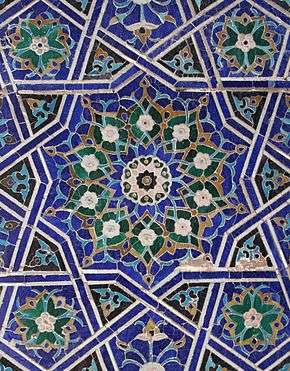Mocárabe


Mocárabe, Honeycomb work, or Stalactite work (Arabic al-halimat al-'uliya, "the overhang") is an ornamental design used in certain types of Islamic architecture that spread throughout the Islamic world in the 12th century. The design consists of a complex array of vertical prisms resembling stalactites. The terms mocárabe and muqarnas are similar and may be used interchangeably at times, but muqarnas do not necessarily have stalactite formations. The stalactite design may be a symbolic representation of the cave where Mohammed received the Koran. Mocárabe was used on friezes, vaults, windows, arches, and columns. The Nasrid dynasty of Granada used mocárabe extensively and used it around the capitals of its columns thereby making a new order of column.
Mocárabe was constructed in a variety of materials including wood and plaster. Under the Nasrid, mocárabe was originally carved into its medium. Later on, moulds were made to cast the designs with clay or plaster. The Nasrid used mocárabe in the Alhambra, most notably in the "Sala de los Mocárabes."
Mocárabe was originally introduced to the Iberian Peninsula by the Almoravids.
References
| Wikimedia Commons has media related to Mocarabes in Spain. |
